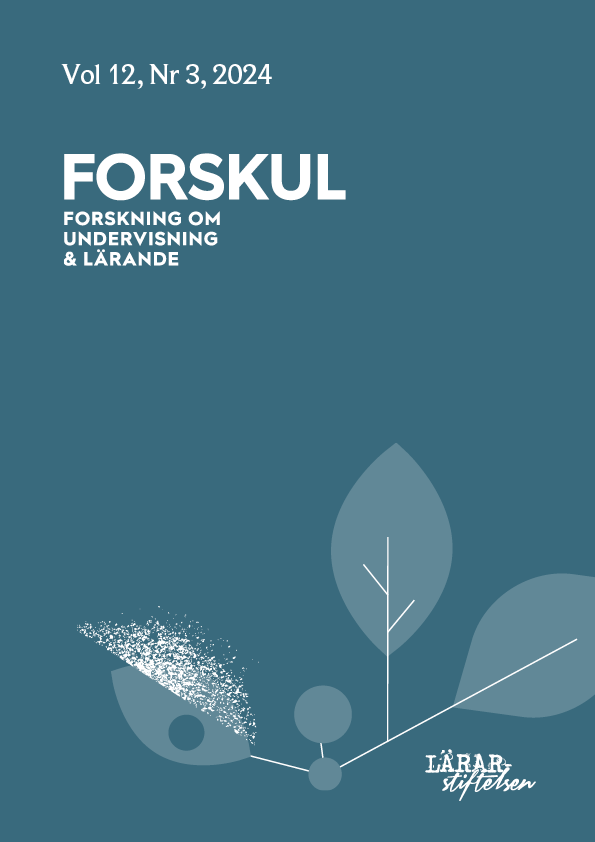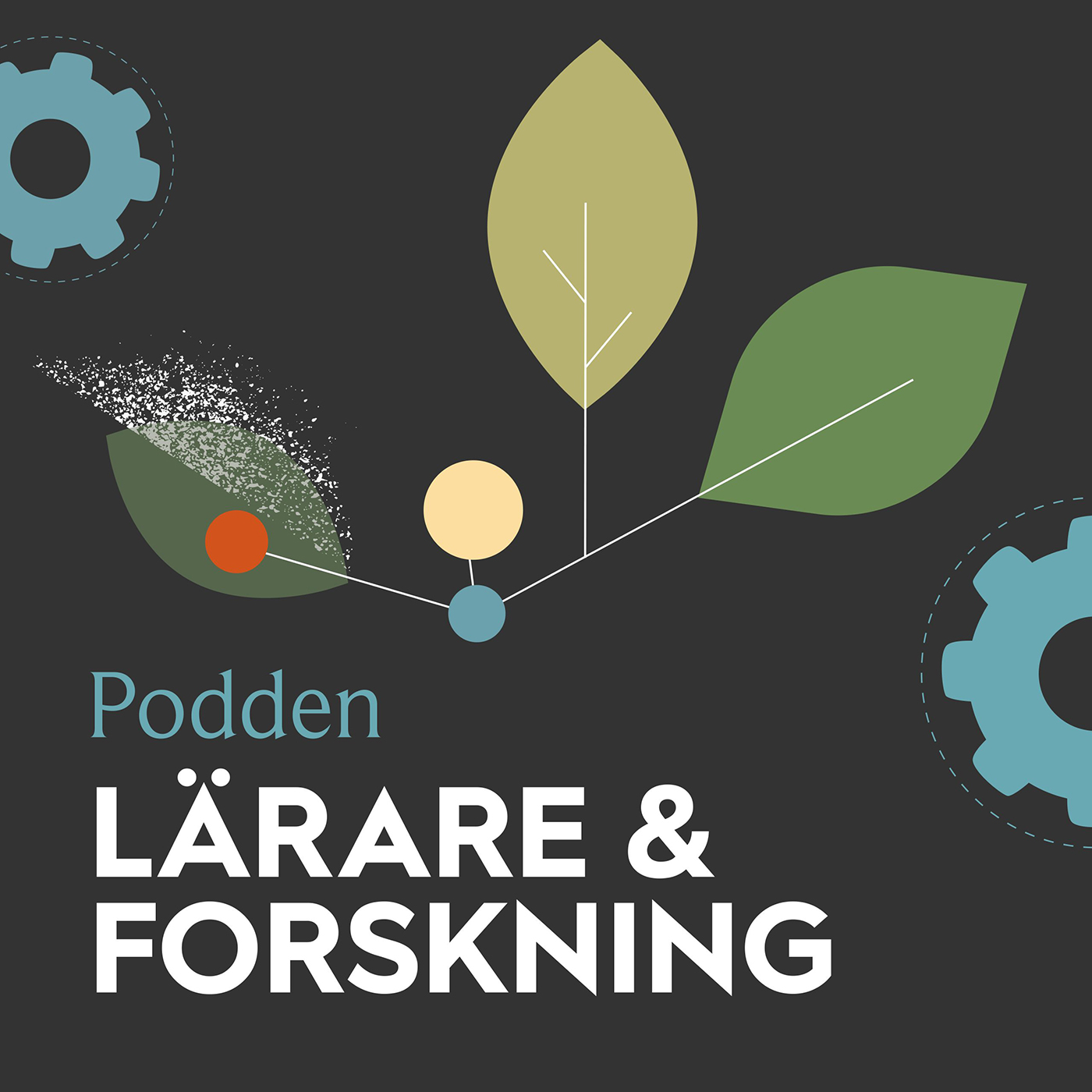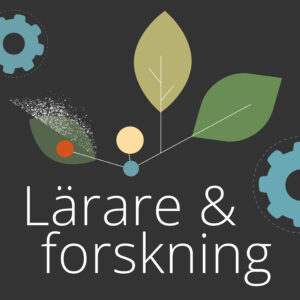Undervisning som utvecklar elevers förmåga att förstå likvärdiga bråk
DOI:
https://doi.org/10.61998/forskul.v12i3.26656Nyckelord:
matematikundervisning, likvärdiga bråk, learning study, variationsteoriAbstract
Syftet med studien är att bidra med kunskap om vilka möjligheter elever får för att lära sig förstå likvärdiga bråk vid olika lektionsdesigner. För att besvara detta syfte genomfördes en Learning study i tre cykler i årskurs 5 med 58 elever. Elevernas möjligheter till lärande analyserades både kvalitativt genom observation av undervisningen och kvantitativt genom test där eleverna fick visa sina kunskaper om likvärdiga bråk före och efter lektionerna. Lektionerna designades med stöd av variationsteori och matematikdidaktisk forskning. Resultaten visar att eleverna utvecklade sin förmåga i alla tre cykler, särskilt i den sista. Framgångsfaktorer i undervisningen inkluderade lärarens användning av kontraster, tallinjen och ett strukturerat sätt att hantera elevernas svar. Dessa faktorer visade sig vara effektiva för att främja elevernas lärande. Studiens resultat kan användas som underlag för lärare och forskare för att ytterligare öka kunskapen om hur undervisningen kan möjliggöra att elever lär sig förstå likvärdiga bråk.
Teaching that develops students' ability to understand equivalent fractions
The aim of the study is to contribute knowledge about the opportunities students get to learn to understand equivalent fractions through various enacted objects of learning in different lesson designs. To address this, a Learning study was conducted in three cycles in grade 5 with 58 students. Students learning opportunities were analyzed both qualitatively through observations and quantitatively through tests where students demonstrated their knowledge of equivalent fractions before and after the lessons. Lessons were designed with the support of variation theory and mathematics education research. Results show that students improved their ability in all three cycles, especially the last one. Success factors included the teacher's use of contrasts, the number line, and a structured approach to student responses. These factors proved effective in promoting students' learning. Teachers and researchers can use the study's results to increase understanding of how teaching can enable students to learn equivalent fractions.
Referenser
Bakker, A., Cai, J., English, L., Kaiser, G., Mesa, V. & Van Dooren, W. (2019). Beyond small, medium, or large: Points of consideration when interpreting effect sizes. Educational Studies in Mathematics, 102(1), 1–8. https://doi.org/10.1007/s10649-019-09908-4 DOI: https://doi.org/10.1007/s10649-019-09908-4
Barbieri, C. A., Rodrigues, J., Dyson, N. & Jordan, N. C. (2020). Improving fraction understanding in sixth graders with mathematics difficulties: Effects of a number line approach combined with cognitive learning strategies. Journal of Educational Psychology, 112(3), 628–648. https://doi.org/10.1037/edu0000384 DOI: https://doi.org/10.1037/edu0000384
Björklund Boistrup, L. (2010). Assessment discourses in mathematics classrooms: A multimodal social semiotic study. [Doktorsavhandling, Stockholms universitet].
Bryman, A. (2018). Samhällsvetenskapliga metoder (3 uppl.). Liber.
Boyer, T. W. & Levine, S. C. (2012). Child proportional scaling: Is 1/3=2/6=3/9=4/12? Journal of Experimental Child Psychology, 111(3), 516–533. https://doi.org/10.1016/j.jecp.2011.11.001 DOI: https://doi.org/10.1016/j.jecp.2011.11.001
Cathcart, W. G., Pothier, Y. M., Vance, J. H. & Bezuk, N. S. (2006). Learning mathematics in elementary and middle schools (4 uppl.). Merrill/Prentice Hall.
Cook P. J., Dodge K., Farkas G., Roland G., Fryer R. G., Guryan J., Ludwig J., Mayer S., Pollack H. & Steinberg L. Not too late: Improving academic outcomes for disadvantaged youth. American Economic Review, 113(3), 738–65. DOI: https://doi.org/10.1257/aer.20210434
Cramer, K., Monson, D., Ahrendt, S., Wyberg, T., Pettis, C. & Fagerlund, C. (2019). Reconstructing the unit on the number line: Tasks to extend fourth graders' fraction understandings. Investigations in Mathematics Learning, 11(3), 180–194. https://doi.org/10.1080/19477503.2016.1245035 DOI: https://doi.org/10.1080/19477503.2018.1434594
Dündar, S. (2015). Mathematics teacher-candidates’ performance in solving problems with different representation styles: The trigonometry example. Eurasia Journal of Mathematics, Science and Technology Education, 11(6), 1379–1397. https://doi.org/10.12973/EURASIA.2015.1396A DOI: https://doi.org/10.12973/eurasia.2015.1396a
Dyson, N. I., Jordan, N. C., Rodrigues, J., Barbieri, C., & Rinne, L. (2020). A fraction sense intervention for sixth graders with or at risk for mathematics difficulties. Remedial and special education, 41(4), 244–254. https://doi.org/10.1177/0741932518807139 DOI: https://doi.org/10.1177/0741932518807139
Ekdahl, A.-L. (2019). Teaching for the learning of additive part-whole relations: The power of variation and connections. [Doktorsavhandling, Jönköping University].
Ennis, R. P. & Losinski, M. (2019). Interventions to improve fraction skills for students with disabilities: A meta-analysis. Exceptional Children, 85(3), 367–386. https://doi.org/10.1177/0014402918817504 DOI: https://doi.org/10.1177/0014402918817504
Eriksson, H. (2015). Rationella tal som tal. Algebraiska symboler och generella modeller som medierande redskap. [Licentiatavhandling, Stockholms universitet].
Erlwanger, S. H. (1973). Benny´s conception of rules and answers in IPI mathematics. Journal of Children´s Mathematical Behavior, 1(2), 7–26.
Fazio, L. K., DeWolf, M. & Siegler, R. S. (2016). Strategy use and strategy choice in fraction magnitude comparison. Journal of Experimental Psychology: Learning Memory, and Cognition, 42(1), 1–16. https://doi.org/10.1037/xlm0000153 DOI: https://doi.org/10.1037/xlm0000153
Flores, M. M., Hinton, V. M. & Taylor, J. J. (2018). CRA fraction intervention for fifth-grade students receiving tier two interventions. Preventing School Failure, 62(3), 198–213. https://doi.org/10.1080/1045988X.2017.1414027 DOI: https://doi.org/10.1080/1045988X.2017.1414027
Fuchs, L. S., Schumacher, R. F., Long, J., Namkung, J., Hamlett, C. L., Cirino, P. T., Jordan, N. C., Siegler, R., Gersten, R. & Changas, P. (2013). Improving at-risk learners’ understanding of fractions. Journal of Educational Psychology, 105(3), 683–700. https://doi.org/10.1037/a0032446 DOI: https://doi.org/10.1037/a0032446
Fuchs, L., Malone, A., Schumacher, R., Namkung, J. & Wang, A (2017). Fraction intervention for students with mathematics difficulties: Lessons learned from five randomized controlled trials. Journal of Learning Disabilities, 50(6), 631–639. http://doi.org/10.1177/0022219416677249 DOI: https://doi.org/10.1177/0022219416677249
Fuchs, L. S., Newman-Gonchar, R., Schumacher, R., Dougherty, B., Bucka, N., Karp, K. S., Woodward, J., Clarke, B., Jordan, N. C., Gersten, R., Jayanthi, M., Keating, B. & Morgan, S. (2021). Assisting students struggling with mathematics: Intervention in the elementary grades (WWC 2021006). National Center for Education Evaluation and Reginal Assistance (NCEE), Institute of Education Sciences, U.S. Department of Education.
Hair, J. F., Black, W. C., Babin, B. J. & Anderson, R. E. (2010). Multivariate data analysis (7 uppl.). Prentice-Hall.
Hamdan, N. & Gunderson, E. A. (2017). The number line is a critical spatial-numerical representation: Evidence from a fraction intervention. Developmental Psychology, 53(3), 587–596. https://doi.org/10.1037/dev0000252 DOI: https://doi.org/10.1037/dev0000252
Hecht, S. A., Close, L. & Santisi, M. (2003). Sources of individual differences in fraction skills. Journal of Experimental Child Psychology, 86(4), 277–302. https://doi.org/10.1016/j.jecp.2003.08.003 DOI: https://doi.org/10.1016/j.jecp.2003.08.003
Hudson, P. P. & Miller, S. P. (2006). Designing and implementing mathematics instruction for students with diverse learning needs. Pearson.
Huges, C. A., Morris, J. R., Therrien, W. J. & Benson, S. K. (2017). Explicit Instruction: Historical and contemporary context. Learning Disabilities Research and Practice, 32(3), 140–148. https://doi.org/10.1111/ldrp.12142 DOI: https://doi.org/10.1111/ldrp.12142
Huinker, D. (2002). Examining dimensions of fraction operation sense. I B. Litwiller (Red.), Making sense of fractions, ratios, and proportions (s. 72–78). National Council of Teachers of Mathematics.
Inagaki, K., Morita, E. & Hatano, G. (1999). Teaching-learning of evaluative criteria for mathematical arguments through classroom discourse: A cross-national study. Mathematical Thinking and Learning, 1(2), 93–111. https://doi.org/10.1207/S15327833MTL0102_1 DOI: https://doi.org/10.1207/s15327833mtl0102_1
Jigyel, K. & Afamasaga-Fuataí, K. (2007). Models of fractions and equivalence. Australian Mathematics Teacher, 63(4), 17–25.
Jordan, N. C., Resnick, I., Rodrigues, J., Hansen, N. & Dyson, N. (2017). Delaware longitudinal study of fraction learning: Implications for helping children with mathematics difficulties. Journal of Learning Disabilities, 50(6), 621–630. https://doi.org/10.1177/0022219416662033 DOI: https://doi.org/10.1177/0022219416662033
Kamii, C. & Clark, F. B. (1995). Equivalent fractions: Their difficulty and educational implications. The Journal of Mathematical Behavior, 14(4), 365–378. https://doi.org/10.1016/0732-3123(95)90035-7 DOI: https://doi.org/10.1016/0732-3123(95)90035-7
Karlsson, E. & Wennergren, A. C. (2014). Att använda elevsvar i undervisningen. Forskning om undervisning och lärande, (13), 53–66. https://doi.org/10.61998/forskul.v2i13.27562 DOI: https://doi.org/10.61998/forskul.v2i13.27562
Kiselman, C. & Mouwitz, L. (2008). Matematiktermer för skolan (1 uppl.). Nationellt centrum för matematikutbildning, Göteborgs universitet.
Kilpatrick, J., Swafford, J. & Findell, B. (2001). Adding it up: Helping children learn mathematics. National Academy Press.
Kullberg, A. & Runesson, U. (2013). Learning about the numerator and denominator in teacher-designed lessons. Mathematics Education Research Journal, 25(4), 547–567. https://doi.org/10.1007/s13394-013-0080-9 DOI: https://doi.org/10.1007/s13394-013-0080-9
Lamon, S. (2020). Teaching fractions and ratios for understanding: Essential content knowledge and instructional strategies for teacher (4 uppl.). Lawrence Erlbaum Associates. DOI: https://doi.org/10.4324/9781003008057
Larsson, S. (2005). Om kvalitet i kvalitativa studier. Nordisk Pedagogik, 25(1), 25–38. DOI: https://doi.org/10.18261/ISSN1891-5949-2005-01-01
Lee, S. J., Brown, R. E. & Orrill, C. H. (2011). Mathematics teachers’ reasoning about fractions and decimals using drawn representations. Mathematical Thinking and Learning, 13(3), 198–220. https://doi.org/10.1080/10986065.2011.564993 DOI: https://doi.org/10.1080/10986065.2011.564993
Lesh, R. (1981). Applied mathematical problem solving. Educational Studies in Mathematics, 12, 235–264. https://doi.org/10.1007/BF00305624 DOI: https://doi.org/10.1007/BF00305624
Levenson, E. (2010). Fifth-grade students’ use and preferences for mathematically and practically based explanations. Educational Studies in Mathematics, 73(2), 121–142. https://doi.org/10.1007/s10649-009-9208-y DOI: https://doi.org/10.1007/s10649-009-9208-y
Lo, M. L. (2014). Variation theory and the improvement of teaching and learning. Acta Universitatis Gothoburgensis.
Manula, T. (2018). Students’ and teachers’ jointly constituted learning opportunities. [Doktorsavhandling, Göteborgs universitet]
Marton, F. (2015). Necessary conditions of learning. Routledge. DOI: https://doi.org/10.4324/9781315816876
Marton, F. & Booth, S. (2000). Om lärande. Studentlitteratur.
Mills, J. (2016). Developing conceptual understanding of fractions with year five and six students. I B. White, M. Chinappan & S. Trenholm (Red.), Opening up mathematics education research (Proceedings of the 39th annual conference of the Mathematics Education Research Group of Australasia) (s. 479–486). MERGA.
Mercer, S. (2018). Psychology for language learning: Spare a thought for the teacher. Language Teaching, 51(1), 1–22. https://doi.org/10.1017/S0261444817000258 DOI: https://doi.org/10.1017/S0261444817000258
Moss, J. (2005). Pipes, tubes, and breakers: New approaches to teaching the rational number system. I M. S. Donovan & J. D. Bransford (Red.), How students learn: history, math, and science in the classroom (s. 121–162). National Academies Press.
Pang, M. F. & Ki, W. W. (2016). Revisiting the idea of ‘critical aspects’. Scandinavian Journal of Educational Research, 60(3), 323–336. https://doi.org/10.1080/00313831.2015.1119724 DOI: https://doi.org/10.1080/00313831.2015.1119724
Pedersen, P. & Bjerre, M. (2021). Two conceptions of fraction equivalence. Educational Studies in Mathematics, 107(1), 135–157. https://doi.org/10.1007/s10649-021-10030-7 DOI: https://doi.org/10.1007/s10649-021-10030-7
Rodrigues J., Dyson N., Hansen N. & Jordan N. C. (2016). Preparing for algebra by building fraction sense. Teaching Exceptional Children, 49, 134–141. https://doi.org/10.1177/0040059916674326 DOI: https://doi.org/10.1177/0040059916674326
Ruiz-Primo, M., Shavelson, R., Hamilton, L. & Klein, S. (2002). On the evaluation of systemic science education reform: Searching for instructional sensitivity. Journal of Research in Science Teaching, 39, 369–393. https://doi.org/10.1002/tea.10027 DOI: https://doi.org/10.1002/tea.10027
Schneider, M. & Siegler, R. S. (2010). Representations of the magnitudes of fractions. Journal of Experimental Psychology: Human Perception and Performance, 36(5), 1227–1238. https://doi.org/10.1037/a0018170 DOI: https://doi.org/10.1037/a0018170
Schumacher, R. F., Jayanthi, M., Gersten, R., Dimino, J., Spallone, S. & Haymond, K. S. (2018). Using the number line to promote understanding of fractions for struggling fifth graders: A formative pilot study. Learning Disabilities Research & Practice, 33(4), 192–206. https://doi.org/10.1111/ldrp.12169 DOI: https://doi.org/10.1111/ldrp.12169
Sidney, P. G., Thompson, C. A. & Rivera, F. D. (2019). Number lines, but not area models, support children’s accuracy and conceptual models of fraction division. Contemporary Educational Psychology, 58, 288–298. https://doi.org/10.1016/j.cedpsych.2019.03.011 DOI: https://doi.org/10.1016/j.cedpsych.2019.03.011
Siegler, R. S. & Lortie-Forgues, H. (2017). Hard lessons: Why rational number arithmetic is so difficult for so many people. Current Directions in Psychological Science, 26(4). https://doi.org/10.1177/0963721417700129 DOI: https://doi.org/10.1177/0963721417700129
Siegler, R. S. & Pyke, A. A. (2013). Developmental and individual differences in understanding of fractions. Developmental Psychology, 49(10), 1994–2004. https://doi.org/10.1037/a0031200 DOI: https://doi.org/10.1037/a0031200
Siegler, R. S., Thompson, C. A. & Schneider, M. (2011). An integrated theory of whole number and fractions development. Cognitive Psychology, 62(4), 273–296. https://doi.org/10.1016/j.cogpsych.2011.03.001 DOI: https://doi.org/10.1016/j.cogpsych.2011.03.001
Siegler, R., Carpenter, T., Fennell, F., Geary, D., Lewis, J., Okamoto, Y., Thompson, L. & Wray, J. (2010). Developing effective fractions instruction for kindergarten through 8th grade: A practice guide (NCEE #2010-4039). National Center for Education Evaluation and Regional Assistance, Institute of Education Sciences, U.S. Department of Education.
Skolverket. (2008). TIMSS 2007: Svenska grundskoleelevers kunskaper i matematik och naturvetenskap i ett internationellt perspektiv (Rapport 323).
Sun, X. (2015). “Variation problems” and their roles in the topic of fraction division in Chinese mathematics textbook examples. Educational Studies in Mathematics, 76(1), 65–85. https://doi.org/10.1007/s10649-010-9263-4 DOI: https://doi.org/10.1007/s10649-010-9263-4
Svanteson Wester, J. (2022). Teaching and learning mathematics with integrated small-group discussions. A learning study about scaling geometric figures. [Doktorsavhandling, Göteborgs universitet].
Sveider, C. (2021). Representationer av tal i bråkform. En studie om matematikundervisning på mellanstadiet. [Doktorsavhandling, Linköpings universitet]. DOI: https://doi.org/10.3384/diss.diva-178048
Tian, J., Braithwaite, D. W. & Siegler, R. S. (2021). Distributions of textbook problems predict student learning: Data from decimal arithmetic. Journal of Educational Psychology, 113(3), 516–529. https://doi.org/10.1037/edu0000618 DOI: https://doi.org/10.1037/edu0000618
Tunç-Pekkan, Z. (2015). An analysis of elementary school children’s fractional knowledge depicted with circle, rectangle, and number line representations. Educational Studies in Mathematics, 89, 419–441. https://doi.org/10.1007/s10649-015-9606-2 DOI: https://doi.org/10.1007/s10649-015-9606-2
Van de Walle, J. A., Karp, K. S. & Bay-Williams, J. M. (2018). Elementary and middle school mathematics: teaching developmentally (10 uppl.). Pearson.
Van Steenbrugge, H. V, Lesage, E., Valcke, M. & Desoete, A. (2014). Preservice elementary school teachers ’ knowledge of fractions : A mirror of students ’ knowledge? Journal of Curriculum Studies, 46(1), 138–161. https://doi.org/10.1080/00220272.2013.839003 DOI: https://doi.org/10.1080/00220272.2013.839003
Vetenskapsrådet. (2017). God forskningsed [elektronisk resurs].
Wang, A. Y., Fuchs, L. S., Fuchs, D., Gilbert, J. K., Krowka, S. & Abramson, R. (2019). Embedding self-regulation instruction within fractions intervention for third graders with mathematics difficulties. Journal of Learning Disabilities, 52, 337–348. https://doi.org/10.1177/0022219419851750 DOI: https://doi.org/10.1177/0022219419851750
Watson, A. & Mason, J. (2006). Seeing an exercise as a single mathematical object: Using variation to structure sense-making. Mathematical Thinking and Learning, 8(2), 91–111. https://doi.org/10.1207/s15327833mtl0802_1 DOI: https://doi.org/10.1207/s15327833mtl0802_1
Vig, R., Murray, E. & Star, J. R. (2014). Model breaking points conceptualized. Educational Psychology Review, 26, 73–90. https://doi.org/10.1007/s10648-014-9254-6 DOI: https://doi.org/10.1007/s10648-014-9254-6
Vikström, A., Kullberg, A. & Runesson Kempe, U. (2017, 29 aug-2 sep). Can public knowledge be created through practitioner research?: Learning studies and variation theory as mechanisms and strategies behind knowledge production in practitioners´ research [konferenspresentation] 17:e Biennial EARLI 2017, Tampere, Finland.
Wong, M. (2013). Locating fractions on a number line. Australian Primary Mathematics Classroom, 18(4), 22–26.
Publicerad
Referera så här
Licens
Copyright (c) 2024 Cecilia Sveider, Anja Thorsten, Joakim Samuelsson

Det här verket är licensierat under en Creative Commons Erkännande 4.0 Internationell-licens.
Författare till innehåll publicerat i Forskul behåller upphovsrätten till sina verk. Artiklar publiceras under villkoren i en Creative Commons-licens CC BY, som tillåter användning, nedladdning, distribution, länkning till och reproduktion i vilket medium som helst, förutsatt att originalverket är korrekt citerat.






